Work from home has all but eliminated the informal social interactions which let employees get to know each other and share ideas. Email and chats aren’t the same as going out for coffee, talking by the watercooler or running into someone in the hall. However, a new generation of remote work apps and virtual meeting platforms aims to fix that.
Creating new meeting spaces in a digital office
“The fact is that any company that becomes successful becomes ‘distributed’,” said Howard Lerman, founder & CEO of Roam, a cloud-based headquarters for remote staff. “You have engineering centers, people in the field, people in flex spaces, remote team members. Any company that succeeds has people anywhere, and frankly, even before the rise of remote work, distributed engagement was already broken.”
Roam, currently in beta with about two dozen enterprise and smaller-sized clients, allows users to navigate a floor plan where each employee has their own office and can move around and meet with their colleagues.
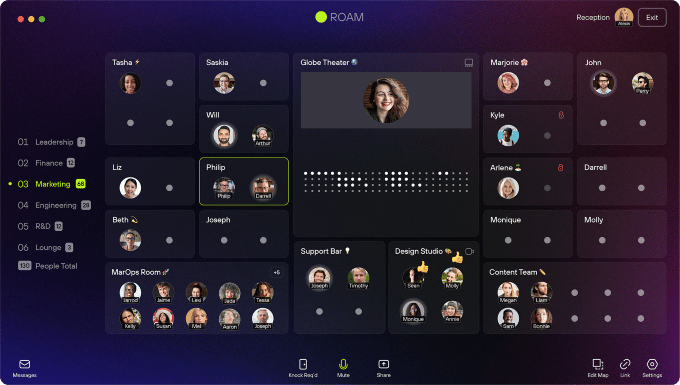
Large organizations can build multiple floors in Roam that resemble an office building, with each floor serving a different department or function. Conference rooms hold more people for formal meetings, while a theater includes a “stage” for Zoom-style video presentations.
Dig deeper: Top 3 marketing use cases for the B2B metaverse
Employees have a bird’s eye view of who is at their desk, which employees are meeting with each other and the status of individual users. This way, team members can know at a glance if someone is available for an informal meeting.
“There are too many meetings,” said Lerman. “Things that should take two people five minutes right now are scheduled for 60-minute Zoom meetings with eight people next week. We’ve been living in a world where our workflow supports the technology, and what we need to do is get to the reverse.”
Supporting workflow and individual preferences
Instead of structuring a team’s workflow with lots of large-scale formal meetings, remote work apps put employees in the driver’s seat, giving them flexibility to meet briefly when they need to.
The average meeting time in Roam is eight and a half minutes, according to Lerman. Of the five hours the average user spends in Roam, only 80 minutes are spent in meetings.
“Most Roam members see their overall meeting times cut by 50% because you can just walk over to someone and meet with them right now instead of scheduling everything in the future,” he said.
Users can also personalize their work area in Roam similar to a social media profile, with family pictures, books they like and other preferences. There’s even an option to play a brief three-second entrance tune when a user enters or leaves a meeting space.
But of course, serious work must also get done. And important work processes have to fit in with the digital experience provided by remote work apps.
Frameable Spaces, a remote work app launched by Frameable, also uses a floor plan and personal offices to support collaboration. Their clients include Amazon, Uber, Airbnb and HubSpot, among others.
“In terms of integrations, you’ve chosen tools you want to use,” said Adam Riggs, Frameable’s founder and CEO. “From a strategic perspective, we don’t want to pick and choose [integrations].”
He added, “We’ve invested heavily in excellent video technology so multiple people can screen-share at the same time.”

Using screen sharing, team members can be logged into other critical work tools individually and then show their screens and share ideas with colleagues. Another use case Riggs pointed out was that Frameable Spaces could be used as a bridge for two separate physical offices. This way, one team could be in an office building together and know instantly who is on call at the other physical office by looking at Frameable Spaces — and the team at the other location would know the same about the first team.
The emphasis here is on synchronous work, whether physically together or remotely connected.
“Without being outright against asynchronous work, we think synchronous enables a variety of talent types to work together,” said Riggs. “It doesn’t have to be ‘camera on’ all the time, but it’s important to have a flow. Email and chat alone do not deliver that.”
Dig deeper: Why we care about AR & VR
Building workplace culture with virtual events
Remote work apps like Roam and Frameable Spaces bring colleagues back into a shared space, digitally. They allow clients to customize the office layout to reflect the company that employees work for, replacing some of the needs that physical offices served, while making work more efficient and flexible for a new era of “distributed” organizations.
Neither, by design, is immersive. Instead, care goes into the experience to provide nuance to virtual interactions.
For instance, in Roam, when people go into the large theater for presentations, they encounter several levels of interaction coded into the UX. First, a user can pick which row to sit in audience. Once seated, they can chat with others in their row, but not with the rest of the theater, just like in the buildup to an in-person PowerPoint. Meanwhile, only those on the “stage” can be seen and heard by everybody, which removes much of the confusion and chaos of massive multi-user Zoom calls.
But in this brave new world of remote work, some companies are experimenting with immersive virtual events. Party.Space, a B2B metaverse platform, hosted a virtual company retreat for Zapier and a Halloween quiz for Google.
Party.Space’s CEO and founder Yurii Filipchuk makes a clear distinction between virtual spaces for work, which handle the brass tacks of Google Docs and task managers, and his own platform, which provides a virtual space for socialization.
“Certainly, any work process is about efficiency and results, but they can hardly be achieved without a social component,” said Filipchuk. “To be more productive, a person needs to feel an emotional bond with his company and colleagues. And here the metaverse comes in.”
He added, “Organizations should create an environment for non-formal social communication as part of their remote format implementation. And again, the metaverse is an excellent tool for it as you can host whatever parties, gatherings and meetings you need, and unite all your team members globally.”
Party.Space hosts fully-immersive virtual 3D spaces that are also easy to use and browser-supported, so that users don’t need any additional hardware to participate. These party spaces are customized to reflect a company’s culture and to keep workers interested with a dynamic environment to explore. Plus, gamification is also included, in the form of themed quizzes.
Remote work is potentially less social, with more distractions, said Filipchuk. Because of this, companies need to step up and make the digital work experience more engaging and persistent.
Get MarTech! Daily. Free. In your inbox.









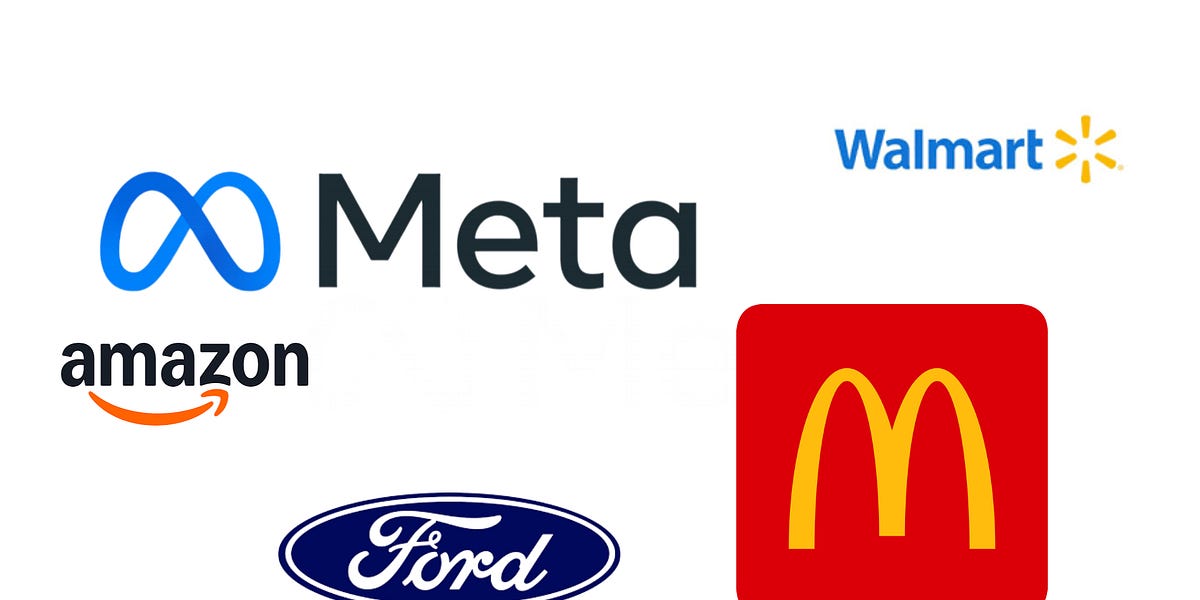











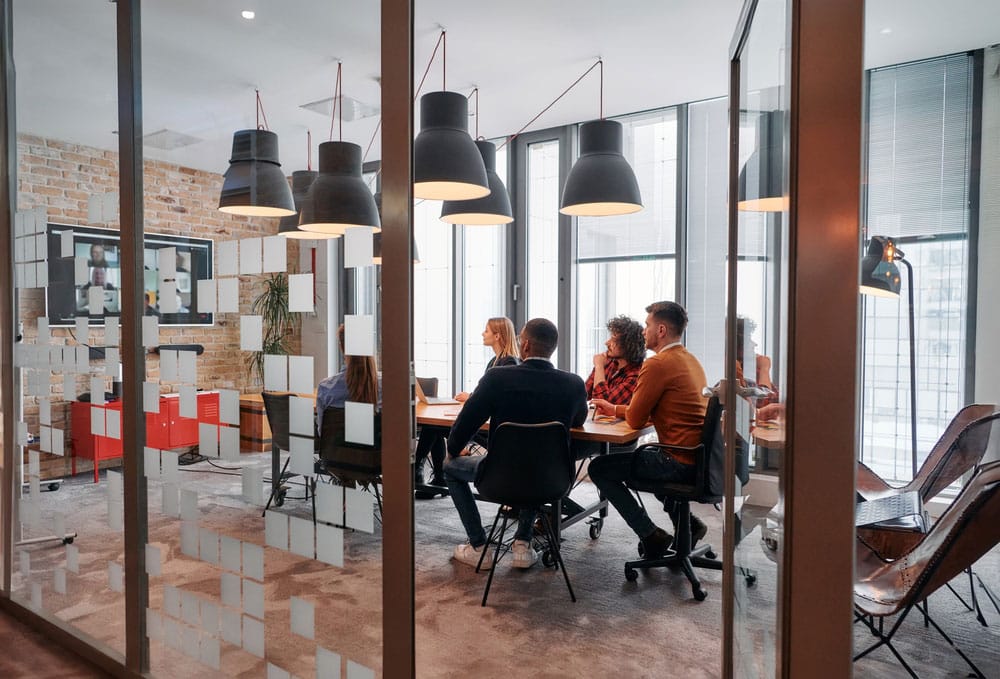





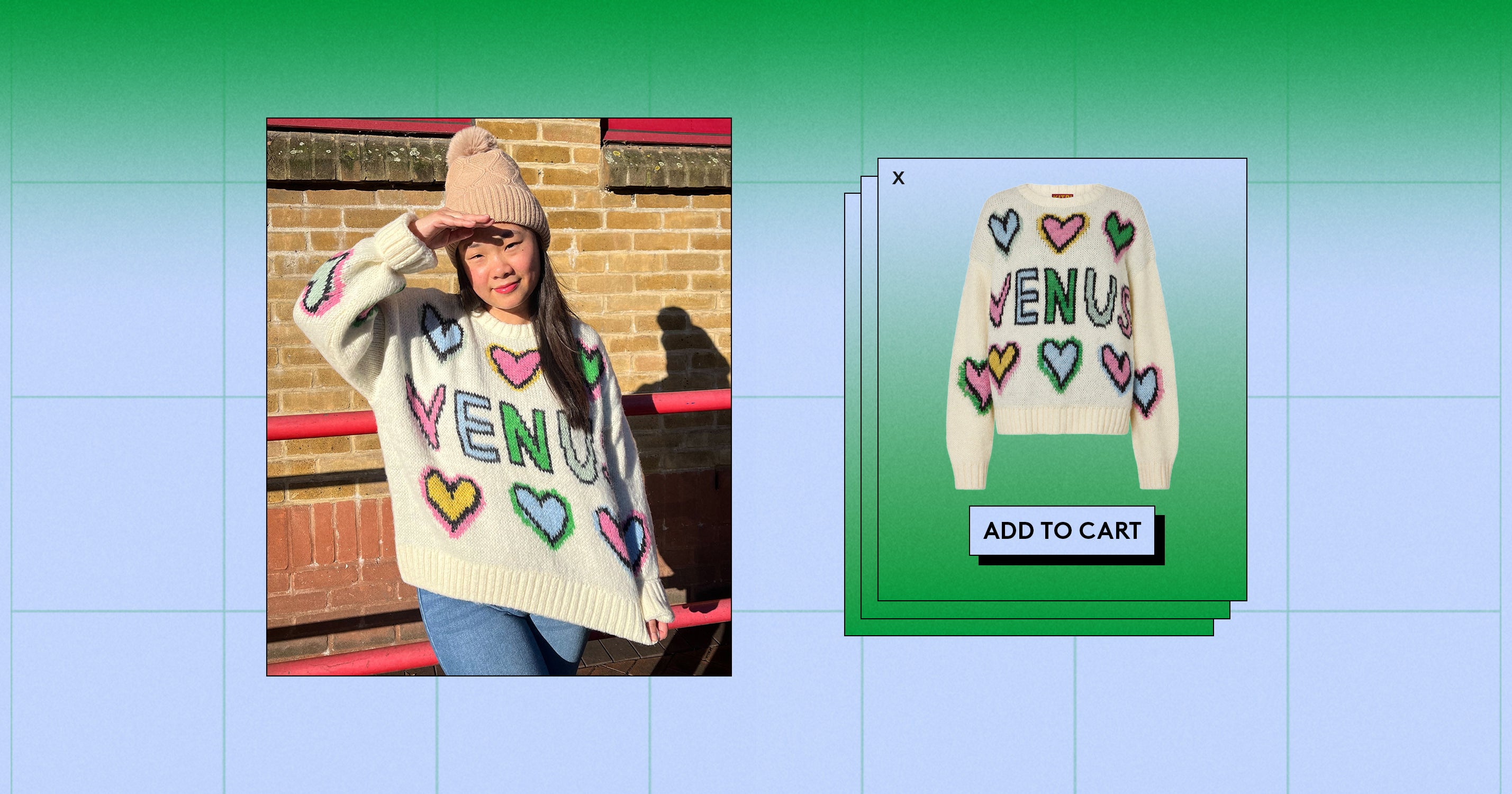
































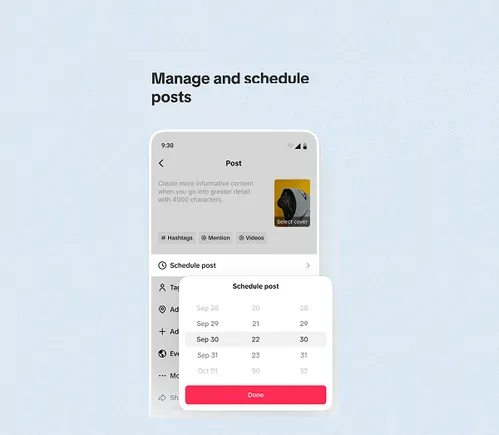
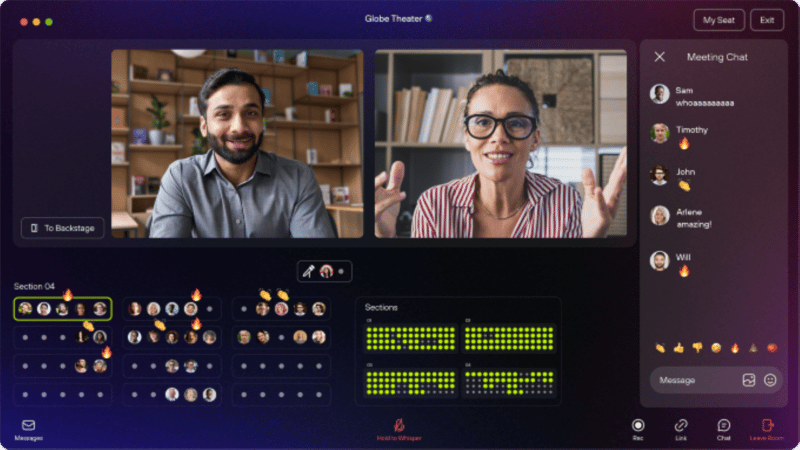










![The Map to Creating Your Own Content Calendar [Infographic] The Map to Creating Your Own Content Calendar [Infographic]](https://www.socialmediatoday.com/imgproxy/fcGcNBhftOErkJ8ZxNnU2_649x_utKFAGTKvNIk9DKU/g:ce/rs:fill:770:364:0/bG9jYWw6Ly8vZGl2ZWltYWdlL2NvbnRlbnRfY2FsZW5kYXJfc2VtcnVzaDIucG5n.png)